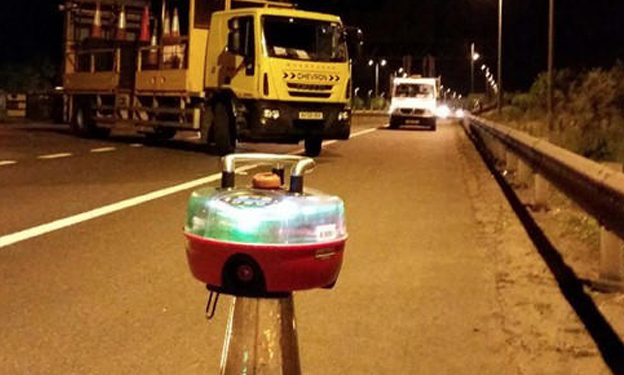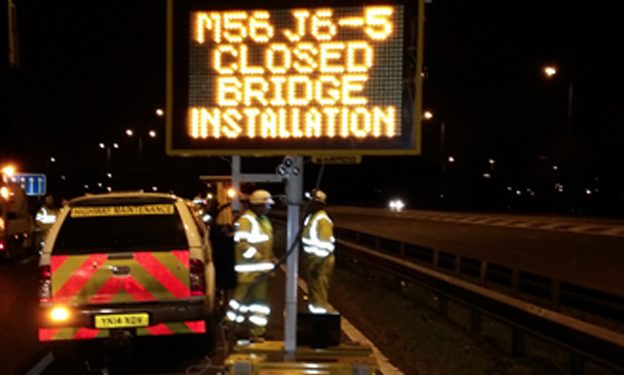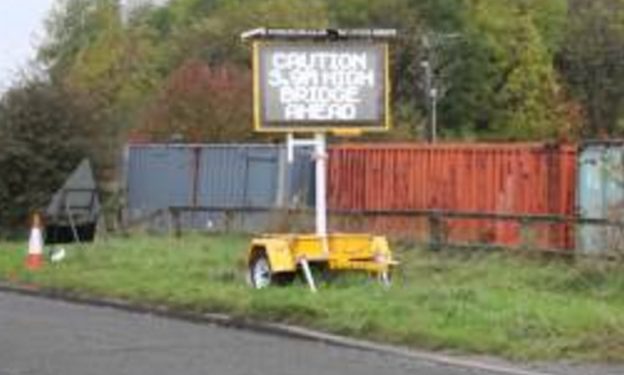HRS deployed the Intellicone Safelane Panic Alarm System successfully on a recent M25 J21a/ M1 J6 closure to help provide advance warning to the workforce of any incursions by errant vehicles and emergency vehicles.
Safelane Saves Money on M56 Closure
-
Reduction in human resources required to man road closure points by using internal site checkpoints to simultaneosly monitor multiple closure and works access points
-
Panic alarm capability for gatemen in event of errant vehicles entering site and threating TM operatives and workforce
-
Improved customer experience by providing dynamic VMS messages to general public at major closure points
-
Incident driven event recording by CCTV to enable prosecutions and remote site management
Overheight vehicle detection system protects highway workers
A new temporary overheight vehicle detection system is protecting BAM Morgan Sindall Joint Venture (bmJV) construction crews that are working on the UK Highways Agency’s M62 and M1 J39-42 Smart Motorway Project. The bmJV group leased the temporary system shortly after its launch in September by Mobile Visual Information Systems Ltd (MVIS) and its partner, Highway Resource Solutions Ltd (HRS), creators of the Intellicone temporary work zone safety system. The overheight detection system is part of the partnership’s new work-zone safety portfolio, and is the first temporary road maintenance safety offering that combines modular electronic perimeters with variable message signs (VMS). The MVIS/Intellicone overheight detection system was launched alongside the Safelane automated traffic management system, which combining Intellicone products with MVIS’ VMS to facilitate safer work-zone traffic management by fewer personnel. The partnership will launch further safety applications in 2015.
One element of the bmJV’s ‘smart motorway’ project involves the suspension of scaffolding beneath a bridge. The road remains periodically open to road-users, and therefore personnel operating from the scaffolding require protection from errant oncoming high-sided vehicles. Signs in advance of the bridge direct high-sided vehicles away from the structure. An Intellicone Sentry Beam detects overheight vehicles, activating a message on MVIS’ VMS-A variable message sign, alerting drivers to their breach and enabling them to turn round and find an alternative route. Simultaneously, an audible Intellicone Portable Site Alarm on the scaffolding warns workers of the breach, allowing them sufficient time to reach a position of safety. While the MVIS/Intellicone temporary detection system was originally designed to protect workers from vehicles in ground-based worksites, the customer identified its potential to protect bridge personnel from high-sided vehicles during its smart motorway project.
Stores manager from bmJV, Chris Hunter, who commissioned the system in September, said, “Historically, BAM and Morgan Sindall have warned drivers of overhead obstructions via goalposts or ‘hangman’ and clatterboard constructions. Neither were as effective as the MVIS/Intellicone solution at halting errant high-sided vehicles, and neither simultaneously alerted overhead personnel of safety breaches. The new solution has quickly proved its worth; within the first week, there were three breaches, all of which were quickly remedied, as the drivers were instantly alerted and able to turn around and find an alternative route. On behalf of the MVIS and HRS partnership, MVIS managing director, Pat Musgrave, commented, “We are pleased that our new temporary overheight detection solution has been so quickly embraced by the transport management market, and that it is already demonstrating its ability to promote worker safety.”



